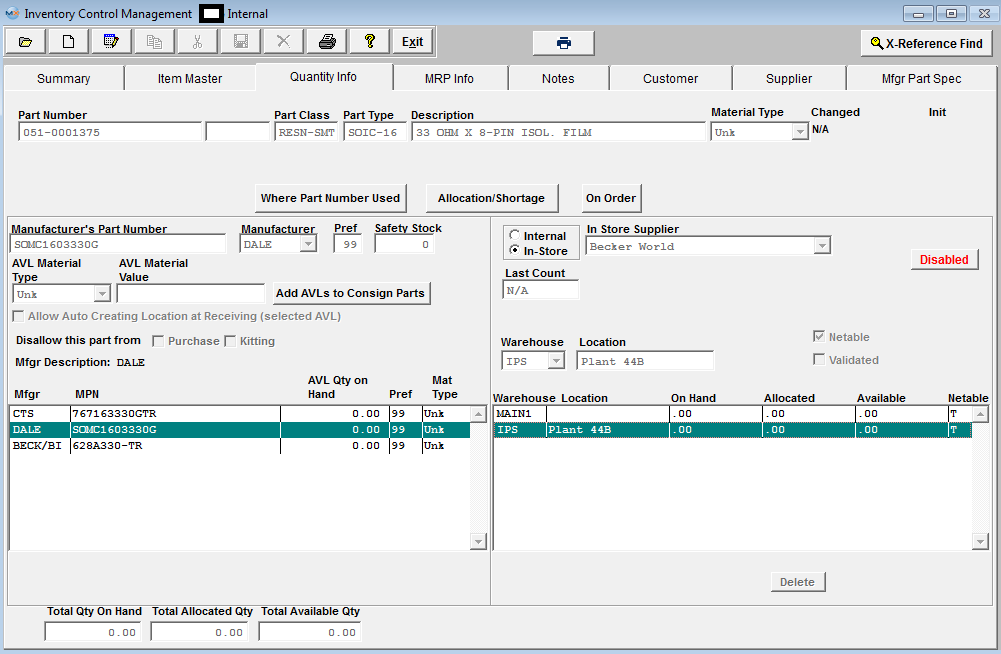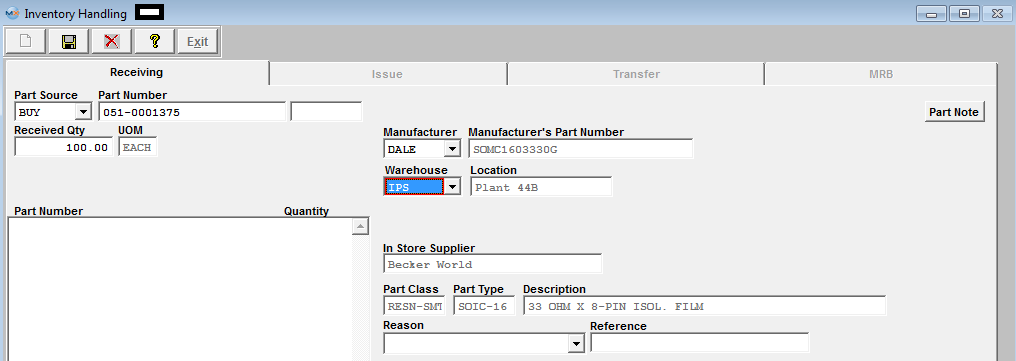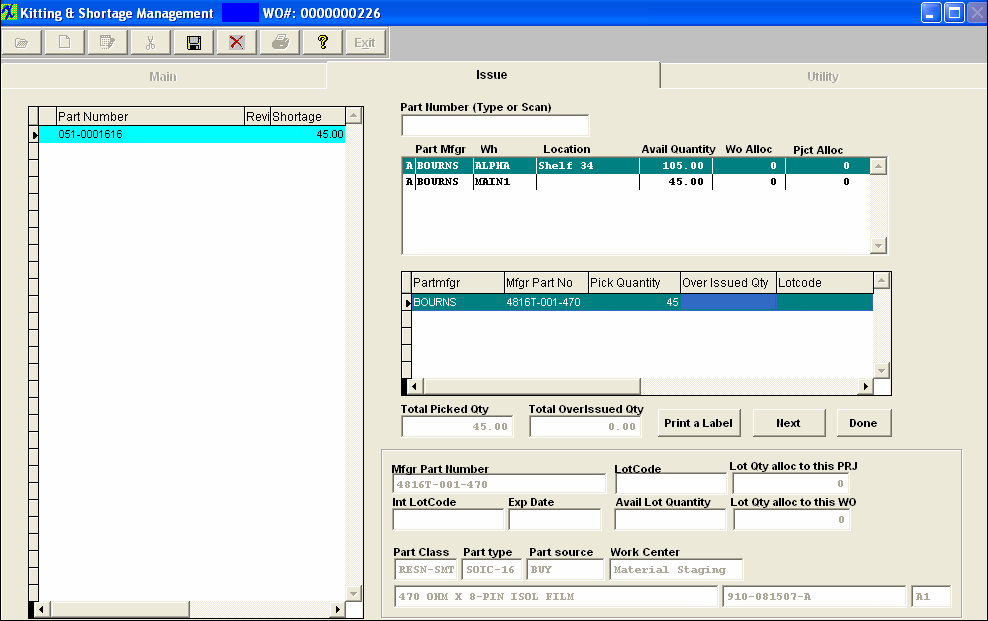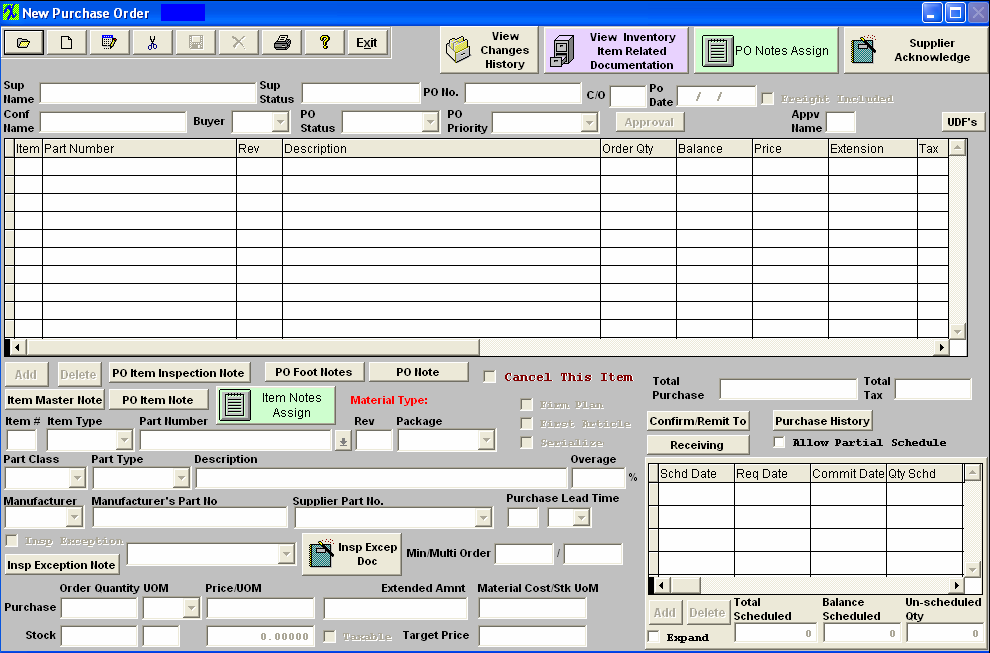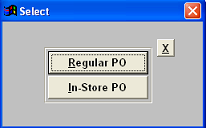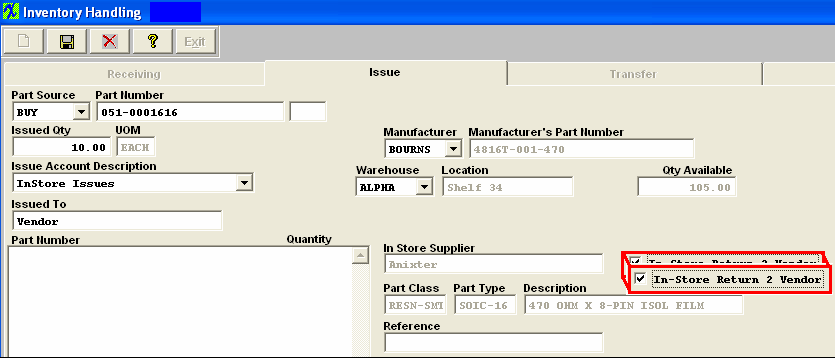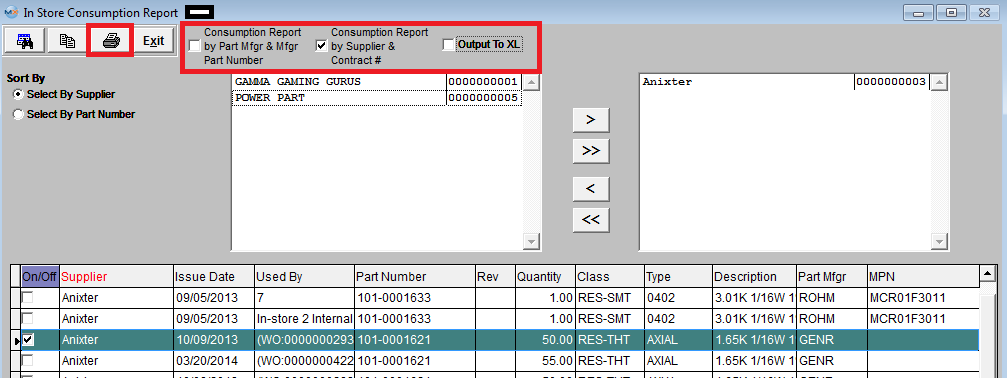| 1. In-Plant Store (IPS) (OPTIONAL Module) |
| 1.1. Prerequistes for In-Store PO | ||||||||||||||||||
|
ManEx’s standard module configuration allows most users to accomplish their daily tasks. For those users wanting to get more from ManEx by leveraging the total solutions, this is one of the optional modules available for purchase. If user purchase's the Optional module -In-Plant Store (IPS) they will also receive the Supplier Contract Management module. There are three uses for this module: supplier owned but stored on-site, customer owned and stored on-site, and internally owned but obsolete parts that the user does not want to affect the books. To place an order or to learn more about this specific module or any of the other optional modules please contact us at http://manex.com"contactus.aspx
After activation, "Purchase Order Management" access for each user must be setup in the ManEx System Security module. Users with “Supervisor Rights” will automatically have access. Prerequisites Required for Entering an In-Store PURCHASE ORDER
Optional Prerequisites for Entering an In-Store PURCHASE ORDER
|
| 1.2. Introduction for In-Plant Store |
Internal In-Plant Store Explanation
The IPS module is to keep inventory as Supplier owned but is recognized as being available for consumption by MRP and kitting. When it is consumed by kitting or transfer, a Purchase Order is automatically generated to reimburse the Supplier for the material.
This inventory type can be used to store all excess inventory caused by the minimum purchase requirement on parts for a particular turnkey job, but for which the customer does not want returned, and the User wishes not to count the inventory as assets as these parts may not be used in the future. The leftover parts can be stored in this inventory for possible future use and does not have to be treated as regular internal inventory for the accounting purpose. The system allows all in-store transactions to happen without any contract entered in the system until the user is ready to create an In-Store PO. There are three uses for this module: supplier owned but stored on-site, customer owned and stored on-site, and internally owned but obsolete parts that the user does not want to affect the books. In any of these situations a supplier must be established (this means that the customer must also be a supplier and the user must be a supplier if they have obsolete inventory in the IPS location). In-Store purchasing overview: In-Store is the situation where the Supplier has placed raw materials in the user’s warehouse. The Supplier still owns the raw materials. When the user is ready to use the Supplier’s raw materials, he/she issues the parts to a kit then creates an In-Store Purchase Order. For In-Store POs, the user may select by Supplier or by Part Number. Then the user may find records according to the selection. Once found, the user may create a P
This module also provides Instore designation for part numbers with a "MAKE" source. This will allow users to utilize inventory handling to add items sourced as MAKE parts to enter inventory into the IPS module. Then, as they are needed, be able to kit to work orders those subassemblies from IPS. There would be no GL records created when the material is moved into IPS via Inventory Handling. But on issue to kit, a PO will be generated, for the amount established in the IPS Contracts, and the Kit (along with WIP) will be charged for the standard cost of the assembly. Tracking In-Store processing through MANEX: · Add the Supplier in the Supplier Information module. · Set up a Stores Warehouse and the applicable G/L number in System Setup/Warehouse Setup module. · Add the in-stores item into the Item Master in the Inventory Control Mgmt module and create the In-Store warehouse. · Move the materials into the warehouse using the Inventory Handling module. · Add the In-Store Contract in the Supplier Contract Mgmt module. · Pull a kit (only a kit shortage gets a P.O.) within the Kitting & Shortage Mgmt module. · Add a Purchase Order and select In-Stores within the PO Mgmt module.
|
| 1.3. Fields & Definitions for In-Plant Store | ||||||||||||||||||||||||||||||||||||||||||||||
|
| 1.4. How To ........ for In-Plant Store |
| 1.4.1. Set-Up for an In-Store PO |
Find a part or product that exists within Inventory Control Mgmt. Setup an In-Store Warehouse for part. Setup up a contract with a supplier(s) within the Supplier Contract Management module. For all other Prerequisites see Article #5575.
Create an Inventory Receipt in the system for the In-Store location using the Inventory Handling module. Since the Receipt was made to a In-Store location there will be no Accounting transaction created at this time.
Or Upload parts to the In-Store warehouse using the IPS Upload module. At this time the following Accounting Inventory Issue Transactions will be created within the system.
 The next Step is to Create the In-Store PO .
|
| 1.4.2. Creating an In-Store PO | ||||
The following screen will appear:
The following screen will appear. Sort By: Supplier or Part Number by clicking on the appropriate radial.  If you Sort By Part Number, an entry box will appear, type in the Part Number and the Revision character, if applicable. 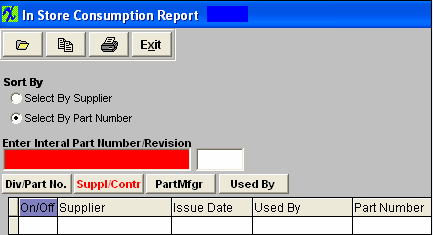 If you Sort By Supplier, the following screen will appear, highlight the supplier of choice.Depress the > button. If you want all of the Suppliers, depress the >> button.  Depress the Find Record button to find records according to the selection. The bottom of the screen will populate. You may sort by Div/PartNo., Supply/Contr, Part Mfgr, or Used By; by depressing the appropriate button.  Depress the On/Off button to check all of the selections. Or, check them individually. Depress the Copy button. This will create a list of Purchase Orders for In Store Items, which will go directly to the default printer. The temporary purchase order number will appear on the report.
NOTE: If user has contract pricing already
setup for example: Up to qty of 5 = $1.00, Up to qty of
100 = $0.94, Up to qty of 101 = $0.95. When the in-store
 Depress the Exit button. This will create the IPS PO. Depress exit button again and it will pull up the IPS record created. The system will NOT allow the user to edit an IPS PO.
Note: In-Store PO's group the parts by Contract number per Supplier. For further detail see Article #3438 . 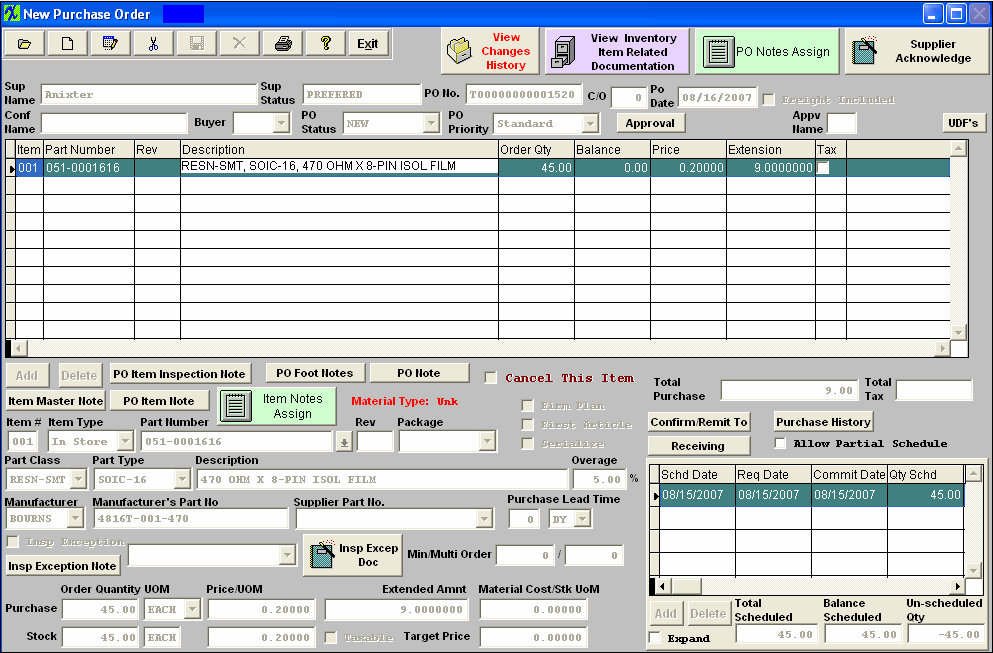 The user will then need to review the IPS PO created and approve the purchase order. Pressing the APPROVAL button in the Purchase Order module will ask for the user’s password. The user must enter a password that has been authorized to approve the dollar amount of the order. Entry of an authorized password and approval inactivates the 1st approval button and places the initials of the person approving the order next to the approval button. If the user is requiring two approvals, the process is repeated for the second approval. Once the PO has received it's final approval a Purchase Order number will be assinged and the PO Status marked as closed. At this point the normal Un-Reconciled Receipt account transaction will be created within the system. Then from this point on the Accounting transaction follow the normal flow through the system. Returning In-Plant Inventory to Supplier If the user has in-store items, which they want to return to Vendor without any impact on accounting or
Depress the Issue tab. Depress the Add record button. Enter Part Source, Part Number, Issued Qty, Issue Account Description, Issued To, Mfgr, then select the In-Store warehouse. Check the "In-Store Return 2 Vendor" box. (Note: This box will only be visible if the In-Store warehouse is selected). If this box is checked no purchase order will be created and there will be no impact on accounting.
Depress the Save button to Save the changes, depress the Abandon changes button to abandon changes.
|
| 1.5. Reports - In-Plant Store |
The In-Store screen has 3 additional check boxes, one for each report and one for output to XL. If a report is selected and the user clicks on the "Print" icon the report will be generated to preview on the screen, if the output to excel is also selected, then the report data will be exported to Excel. If both reports are selected the reports will be generated in sequence.
.
|
| 1.6. FAQs- In-Plant Store |
| Facts and Questions for the In-Plant Store |
